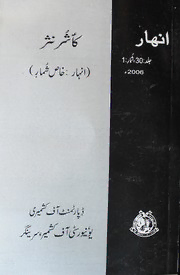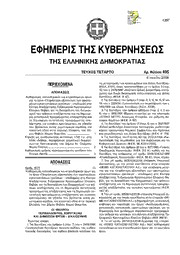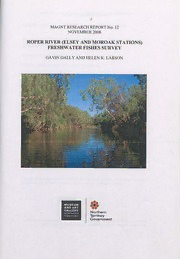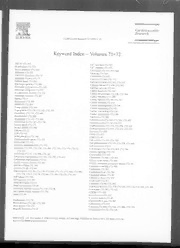
Research In Psychology: Methods and Design 6E PDF
Preview Research In Psychology: Methods and Design 6E
Research in Psychology Methods and Design Sixth Edition C. James Goodwin Western Carolina University To Susan VICEPRESIDENT&EXECUTIVEPUBLISHER JayO’Callaghan EXECUTIVEEDITOR ChristopherT.Johnson ASSISTANTEDITOR EileenMcKeever EXECUTIVEMARKETINGMANAGER DanielleTorio SENIORPRODUCTIONEDITOR TrishMcFadden COVERDESIGNER MadelynLesure PRODUCTIONMANAGEMENTSERVICES LaserwordsMaine MEDIAEDITOR BridgetO’Lavin PHOTOEDITOR HilaryNewman COVERPHOTO ©MediaBakery ThisbookwassetinBembobyLaserwordsandprintedandboundbyR.R.Donnelley&Sons,Inc. (Crawfordsville).ThecoverwasprintedbyPhoenixColor. Thisbookisprintedonacid-freepaper.∞ Copyright©2010JohnWiley&Sons,Inc.Allrightsreserved.Nopartofthispublicationmaybereproduced, storedinaretrievalsystemortransmittedinanyformorbyanymeans,electronic,mechanical,photocopying, recording,scanningorotherwise,exceptaspermittedunderSections107or108ofthe1976UnitedStates CopyrightAct,withouteitherthepriorwrittenpermissionofthePublisher,orauthorizationthroughpaymentof theappropriateper-copyfeetotheCopyrightClearanceCenter,Inc.,222RosewoodDrive,Danvers,MA 01923,websitewww.copyright.com.RequeststothePublisherforpermissionshouldbeaddressedtothe PermissionsDepartment,JohnWiley&Sons,Inc.,111RiverStreet,Hoboken,NJ07030-5774,(201) 748–6011,fax(201)748–6008,websitehttp://www.wiley.com/go/permissions. Toorderbooksorforcustomerservice,pleasecall1-800-CALLWILEY(225–5945). LibraryofCongressCataloging-in-PublicationData Goodwin,C.James. Researchinpsychologymethodsanddesign/C.JamesGoodwin.—6thed. p.cm. Includesbibliographicalreferencesandindex. ISBN978-0-470-52278-3(cloth) 1.Psychology—Research—Textbooks.2.Psychology—Research—Methodology—Textbooks. 3.Psychology,Experimental—Textbooks.I.Title. BF76.5.G642010 150.72—dc22 2009014320 PrintedintheUnitedStatesofAmerica 10987654321 Preface .................................................................................................................................................................................................................................. The Philosophy of the Text In the process of preparing six editions of this text, I have been guided by several strong beliefs. First, I would like students to develop a clear sense of how experimental psychologists think and how they do their work. Thus, the student using this book will encounter thorough discussions of the nature of psychological science and how it differs from pseudoscience, the logic of scientific thinking, and the manner in which experimental psychologists (a) develop ideas and hypotheses for research, (b) design their studies, (c) carry them out, (d) analyze them, and (e) draw reasoned conclusions from them. Second, I want students to understand that psychologistsuseavarietyofmethodsintheirattemptstounderstandpsychological phenomena.Althoughthebook’smainfocusisontheexperimentalmethod,there isthoroughtreatmentofnumerousotherresearchstrategies.Third,becauseIbelieve that researchers must always be aware of the ethical dimensions of their research, I have placed the ethics chapter early in the book (Chapter 2) and have included someadditionaldiscussionofethics(EthicsBoxes)ineverychapterinthebookafter Chapter 2. Fourth, because I have a love for psychology’s history and believe that nobody can understand psychology’s present without knowing something of its past, I have incorporated some of the history of experimental psychology into the text.Recognizingthatmytextisforamethodscourseandnotforahistorycourse, however, I have only included historical information that illuminates important methodological concepts. Fifth, and perhaps most important, although I believe that doing psychological science is a joyful activity, it has been my experience that somestudentsenterthecoursewithasenseofdread.Theybelieveitwillbeboring, difficult, and not especially relevant for them. To counter this, I have taken pains to write a student-friendly book that is appealing (lots of interesting descriptions of real research), understandable (clear writing in an interactive, conversational style), and valuable (sharpening important critical thinking skills). iii iv Preface The Organization of the Text The book includes twelve chapters, an epilogue, and several useful appendices. By thoroughly explaining the scientific way of thinking and contrasting it with nonscientific and pseudoscientific thinking, the opening chapter lays the ground- work for all that follows. Chapter 2 is devoted to research ethics and concerns howtheAmericanPsychologicalAssociation’smostrecentcodeofethicsisapplied to research with both human participants and animal subjects. The problem of scientific fraud is also discussed. Chapter 3 examines the question of how ideas for research originate and explains the continually evolving relationship between theoryandresearch.Italsohelpsstudentslearntousepsychology’smostimportant electronicdatabase(PsycINFO)andprovidessometipsabouthowtodoaliterature review. Issues related to measurement and data analysis are the focus of Chapter 4, which leads up to four consecutive chapters on the experimental method, psy- chology’s most important method because of the kind of conclusion (causal) that can be drawn from it. There is a basic introduction to the experimental method (Chapter5),adiscussionofcontrolproblemsinexperimental research(Chapter6), and two chapters devoted to experimental design (Chapter 7 on single-factor designs and Chapter 8 on factorial designs). Descriptions of other methodologi- cal strategies follow in subsequent chapters. These include correlational research (Chapter 9); quasi-experimental designs, applied research, and program evaluation (Chapter 10); research using ‘‘small N’’ designs (Chapter 11); and two varieties of descriptive research, observational research and surveys (Chapter 12). The appen- dices describe how to prepare the (in)famous APA-style research report, reprint the APA ethics codes for human research, and provide feedback for the some of the end-of-chapter applications exercises. Note the word ‘‘some.’’ So that you as instructorscanusesomeofthesematerialsforhomeworkassignments,Ihavegiven students feedback on approximately half of the exercises, in Appendix C. Answers to the remaining exercises can be found in the electronic Instructor’s Resources (www.wiley.com/college/goodwin). At various points in the text, there are boxed sections of three general types. Origins boxes supply interesting information about the historical roots of exper- imental psychology and show how various research concepts and methods (e.g., the questionnaire) were created and have evolved over the years. Classic Studies boxes describe well-known experiments (e.g., Bandura’s Bobo studies) that illus- trateparticularresearchdesignsand/ormethodologicalissues.Finally,thepreviously mentionedEthicsboxesreflectmybeliefthataconsiderationofresearchethicsshould occur in more than just a single chapter. The ethics boxes consider such topics as informed consent, the operation of subject pools, and the proper use of surveys. Itisnotuncommonfor methodstexts tobeginwith simple descriptive methods (observation, survey, etc.), move through correlational and quasi-experimental methods, and eventually reach the experimental method. There is certainly some logic to this organizational scheme, but it is not the scheme I have chosen to use. Rather,whenteachingthecoursesomeyearsago,Iwasalwaysdisturbedbyhowlate in the semester students were encountering such things as factorial designs—who wantstobefiguringoutinteractionswhiletheyarestilldigestingtheThanksgiving turkey? I wanted to get to experiments sooner in the semester because I wanted to be able to spend time on them if students ran into trouble. Also, because most of Preface v my labs used experimental designs, I wanted students to have some understanding of the studies they were running during the semester. So my chapter organization reflectsthewayIteachthecourse—Iliketogettoexperimentsassoonaspossible. Reviewers of the text have been divided onthe issue, with mostliking the current organization, but some preferring to start with descriptive methods. I have been pleasedtolearn, however, thatanumber ofreviewer/colleagueswholike tobegin the course with descriptive methods have been using my text anyway, and simply changing the chapter sequence to suit themselves. Thus, it is worthnoting that the textistosomedegreemodularandcanbetaughtusingseveraldifferentarrangements of chapters. If Your Course Combines Research Methods and Statistics In recent years, a number of psychology departments have taken their stand-alone statistics andmethodology coursesand combined them into two sequential courses that fully integrate statistics and methodology. The rationale for this is the unques- tioned interdependence of the two. For instructors teaching in this way, the issue thenbecomeswhattodoforatext—statisticstextsdon’thaveenoughmethodology and methodology texts don’t have enough statistics. One solution is to use a text specifically written for the integrated course. A feware beginning toappear onthe market, but the choices are limited at this point. Another strategy is to adopt both a stat text and a methods text, telling students that they will be using both books both semesters, so the cost won’t be any greater than taking a traditional statistics coursefollowedbyamethodscourse.Theproblemwiththissecondstrategyisthat statistics texts and methodology texts often use inconsistent language and slightly different statistical symbol systems. Students can easily be confused about the t test for dependent groups in their methodology text and the t test for correlated samples in their statistics text, failing to realize that the two are identical. To solve this problem, I have coordinated the rewriting of this book with Robert and John Witte, who write a successful statistics text for Wiley (Statistics), now in its ninth edition.Thatis,Ihavechangedsomeofmystatistical languageandsymbolssothat they match theirs exactly, and I have included occasional references to their fine book.Thus,ifyouareteachingacombinedcourseandwishtouseseparatestatistics andmethodstexts,adoptingmybookalongwiththeWittetextwillguaranteeyou consistency both in the language and the statistical symbols. Pedagogical Features of the Text For the student, this text has several features designed to facilitate learning. These include: • Atthestartofeachchapter,abriefpreviewofwhatistobefoundinthechapter and a set of specific learning objectives for the chapter. • Throughout each chapter, periodic Self Tests, set off in small boxes, enabling the student to test comprehension for a portion of a chapter just completed. • At the end of each chapter, a comprehensive summary of important points, a set of Review Questions, a set of Applications Exercises, and answers to the vi Preface Self Tests. The review questions are short essay questions for discussion and reflection. These review questions are not just definitional; they ask students to apply some of the concepts learned in the chapter and to think critically about them. The applications exercises include thought questions and problems to solve that require using the concepts learned in the chapter. There is feedback to about half of these exercises in Appendix C. The online Instructor’s Manual includesfeedbackfortheremainingexercises,whichenablesinstructorstoassign some of the end-of-chapter exercise as graded homework. • Key terms and concepts appear in boldface print throughout the book and theyarecollectedinaGlossaryattheendofthebook.Tomakeiteasiertofind where the descriptions of the Glossary terms are in the text, I have structured the Subject Index so that the text page where a glossary term is first defined is boldfaced. • Throughout the text, there are numerous concrete examples of real research, usedtoillustratevariousmethodologicalpointsandtoenhancecriticalthinking. These include forty detailed descriptions (called ‘‘Research Examples’’) and dozens of other, briefer descriptions. Electronic Resources There are several electronic resources available for students and instructors. They can be found here: www.wiley.com/college/goodwin Simply go to the site, find my textbook and click on Student or Instructor Resources. Students can get to the materials directly; instructors must register with Wileybecausesomeofthematerials(e.g.,testbank)arepassword-protected.Here’s what can be found. For the Instructor: • An Instructor’s Manual, organized by chapter, which provides numerous ideas for in-class exercises, lecture elaborations, homework, and so on (many taken frompsychology’sbestjournalforteachers,TeachingofPsychology).Italsoincludes the answersfor those end-of-chapter Applications Exercises thatstudents won’t find in Appendix C. • A Test Bank for each chapter that includes both objective (multiple choice and fill-in-the-blank) items and written questions (short essays and comprehensive, integrative essays). • A set of PowerPoint slides to accompany the chapters. • A Laboratory Manual—a set of materials and instructions that will enable you to collect data in 20 different experiments. • Everything that is to be found in the Student materials. Preface vii For the Student: • Accompanying this text and available from the Wiley website is an electronic Study Guide. The Study Guide includes concept questions for students to answer as they work their way through chapters, sample objective test items (fill-ins,matching,andmultiplechoice)withdetailedfeedback,andapplications exercises similar to the ones found at the ends of chapters in the main text. • The Study Guide also includes two important aids for statistical analysis: Detailed descriptions about how to calculate various statistical analyses by ■ hand (e.g., t tests, ANOVA); this has been coordinated carefully with the Witte’s statistics text and replaces the Appendix C that appeared in earlier editions of this text. Because many departments rely on SPSS for statistical analysis, I have ■ included a detailed step-by-step SPSS Guide that my students have found useful over the years. Acknowledgments This project would not have been started, much less completed and evolved into a sixth edition, without the encouragement and support of many people, most notably my dear wife of forty-plus years (Susan, retired now, but a former corporate auditor good at keeping me on task, yet willing to let me sneak out for an occasional semi-guilt-free 18 holes of mountain golf) and my children (Kerri, a university professor and cognitive psychologist, and Charles, a full-time project geologist for an environmental consulting firm and part-time graduate student). The hundreds of students who have passed through my research methods course have been my principal source of inspiration in writing the book—during the years before I started writing the first edition, many of them told me to stop complainingaboutthetextbookbeingusedatthetimeandwritemyown.Iwould especially like to acknowledge Aimee Faso Wright, who was the leader of a group ofstudentsinterestedincognitivemappingandwastheseniorauthorofthesample study on that topic in Appendix A. I’m delighted that she has earned a Ph.D. in pharmacology,andonlymildlydisappointedthatexperimentalpsychologylosther. To Darryl Bruce, my dissertation director, I owe a great debt. He first showed me just how exciting research in psychology could be during my grad school days in Tallahassee. Today, he is happily retired in beautiful Nova Scotia, which gives Susanandmeanexcuse tovisit aplace with(relatively)cheaplobster.Iwouldalso like to thank two of my colleagues in the Society for the Teaching of Psychology (APA’s Division 2), Wayne Weiten and Steve Davis. At the very beginning of the project, both were instrumental in convincing me that I actually could write a book, and both continue to provide support, encouragement, and friendship. viii Preface Thanksalsogotothestalwartandthoughtfulreviewersforthetext.Sixthedition reviewers included: Chad Galuska, College of Charleston Michael Marcell, Collegeof Charleston Christine Selby, Husson College Stephen D. O’Rourke, TheCollege of New Rochelle Finally,theeditors,productionteam,andmarketingstaffatWileyhavecontinued to be first rate, making the entire process a breeze (or at least much less onerous thanIhadanyreasontoexpect).Iamespeciallygratefulfortheeditorialsupportof ChrisJohnsonand EileenMcKeever, andfor the skillful production workofMark Sehestedt and his team at Laserwords Maine.
The list of books you might like

What Happened to You?

The Silent Patient

Haunting Adeline

Can’t Hurt Me: Master Your Mind and Defy the Odds

NSLM Newsletter - Winter 2006

ES 4755: GENERAL REQUIREMENTS FOR SAFETY OF LAMP CONTROL GEAR

New Jersey Numismatic Journal: Vol. 31 No. 2

DTIC ADA490884: Advisor 2.0: Advancing the Military Transition Team Model

A Maid of the Silver Sea by John Oxenham

COMESA 233: Leather -- Sampling -- Number of items for a gross sample

Anhaar 2006 Kaeshur Nasr

NOTAS SOBRE A TEORIA DOS PRINCÍPIOS DE ROBERT ALEXY Natália Braga Ferreira NOTES ...

Reiki for Dummies

Greek Government Gazette: Part 4, 2006 no. 495

Tomato container gardening: 7 easy steps to healthy harvests from small spaces

Hermanas de sangre

MAGNT research report

On the Re-erection of the Tribe Stenoscelideini SCHAEFER (Heteroptera, Coreidae, Coreinae)






